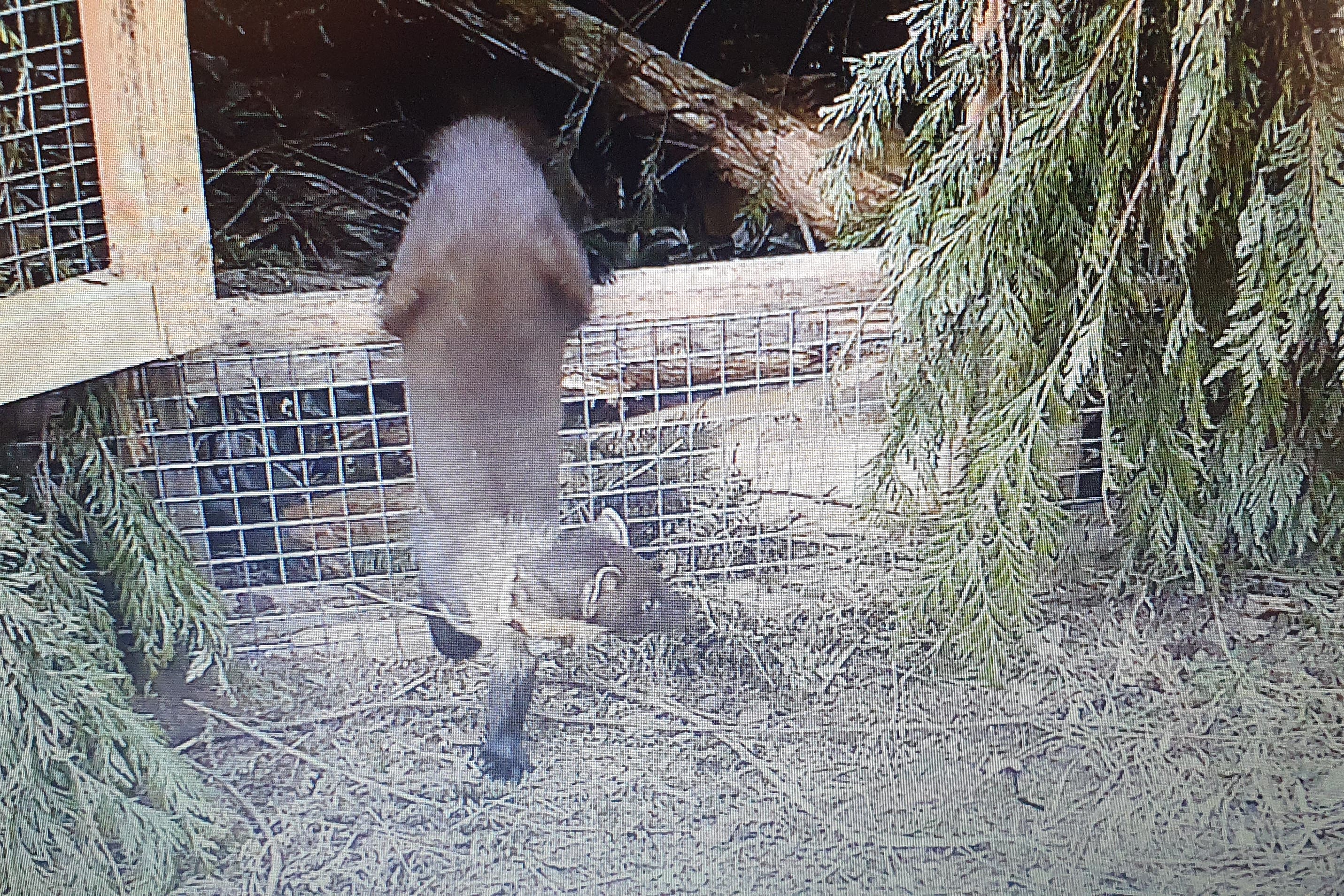Pine martens return to South West after 100-year absence with Dartmoor release
The ‘cat-sized, tree-climbing members of the weasel family’ have been reintroduced after going extinct in the region more than a century ago.

Pine martens have been returned to the wild in the South West of England for the first time in more than a century, conservationists said.
A project to establish a population of pine martens back in the region has involved releasing eight adult females and seven males into secret locations on Dartmoor in September.
Pine martens – described by wildlife experts as cat-sized, tree-climbing members of the weasel family – went extinct in the South West more than 100 years ago as a result of loss of their woodland habitat over the centuries as well as hunting and trapping.
The release of the 15 animals into Dartmoor is the first phase of a project to re-establish them, led by Devon Wildlife Trust in partnership with Dartmoor National Park Authority, Exmoor National Park Authority, Forestry England, National Trust, Somerset Wildlife Trust and Woodland Trust.
The scheme, supported by the National Lottery Heritage fund, will also see a similar release of animals in Exmoor during 2025, the conservation groups said.
The pine martens released on Dartmoor have been sourced from healthy wild populations in Scotland, and were health checked by vets before being driven to their new Devon homes.
They arrived under cover of darkness, and were placed in individual specially-constructed pens at secluded woodland locations, where they were fed and given water by local volunteers during three days of quiet acclimatisation before being allowed to venture out into their new homes.
Each of the 15 animals were fitted with a radio collar to track their movements in the coming months, before they drop off in around six to nine months time.
It is expected that the new animals will disperse to establish their own territories, with the hope the population will grow gradually in the region – and eventually the populations on Dartmoor and Exmoor will meet up.
Restoring a native predator doesn’t only conserve the species itself but helps to restore entire woodland ecosystems
Ed Parr Ferris, conservation manager at Devon Wildlife Trust, said: “Pine martens are stunning members of the weasel family, about two foot long, weighing just 1.5 kilos, with their creamy-orange bibs contrasting against their smooth chocolate-coloured coat.
“They are amazingly well adapted for life in the woodland night, with strong claws, lithe bodies, fantastic hearing and even reversible rear ankles helping them to run down trees.
“These rare mammals need our help to return to their former homes in the South West, but we also need their help to bring back the natural balance of wildlife to our woodlands.”
Abigail Parravani, Forestry England forest planner, said: “Restoring a native predator doesn’t only conserve the species itself but helps to restore entire woodland ecosystems by reinstating natural processes that humans have interrupted.
“I’m excited to watch the project unfold and see the positive impact of pine martens on the health and resilience of these important landscapes.”
The Woodland Trust’s outreach manager in the South West, Eleanor Lewis, added: “Historically, the loss of woodland resulted in the decline of pine martens, so our focus will be upon working with landowners and providing advice and support on how woodlands can be managed and created to enhance the conditions for pine martens and ensuring they can play their vital role in our ecosystem that has been missing for so long.”
Bookmark popover
Removed from bookmarks